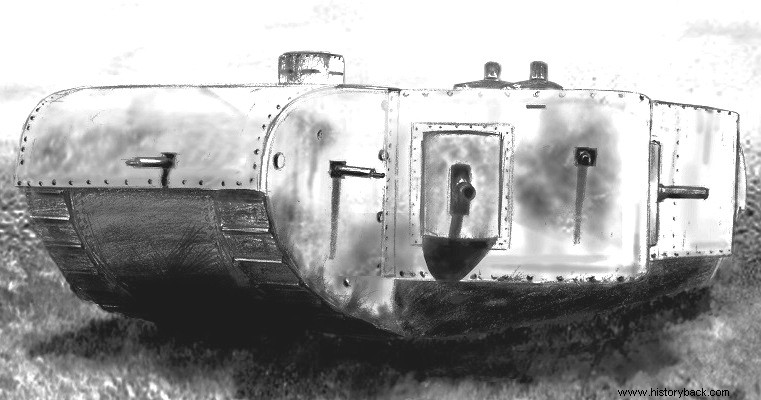
The Großkampfwagen or K-Wagen was the first German super-heavy tank that, if it had entered service before, might have changed the course of World War I. In June 1917, before the first German battle tank, the A7V, was even completed, the German army requested the construction of an assault super-tank capable of crushing the British and French defense lines.
The plan was taken up by the retired German captain Joseph Vollmer, who quickly presented his plan, on June 28, to the Ministry of War. The plan was approved and an order was given for the immediate manufacture of 10 examples, by two companies, of the tank under the name K-Wagen.
The original design called for a 165-ton tank, but eventually the Germans settled on a 120-ton tank. For rail transport the chariot would be disassembled. Finally, two prototypes began to be built, but they were not completed before the end of the First World War.
The chariot consisted of six sections that were joined together. It was the control compartment, the combat compartment, the engine room, the drive compartment and two armament compartments. The tank had a destroyer's command and fire control system. The driver couldn't see out. He was just following the crew chief's orders.
The tank was intended to be equipped with four 77mm guns. and seven 7.92mm MG08 machine guns. Its crew would consist of the crew chief, two drivers, one transmitter, one gunnery officer, 12 gunners, eight gunners and two engineers. In the original plan it was planned to carry a flamethrower.
After the defeat and the Treaty of Versailles, Germany was prohibited from owning tanks. So the two K-Wagens were dismantled under the supervision of ANTAD officers. The chariot had a weight of 120 tons, a length of 13 m. width 6m and a height of 3m. In total it had a crew of 27 men and its maximum armor was 30 mm thick. (heavy for the season). It was powered by two Daimler V6 engines of 650 hp which gave it a maximum speed of 7.5 h.a.h
